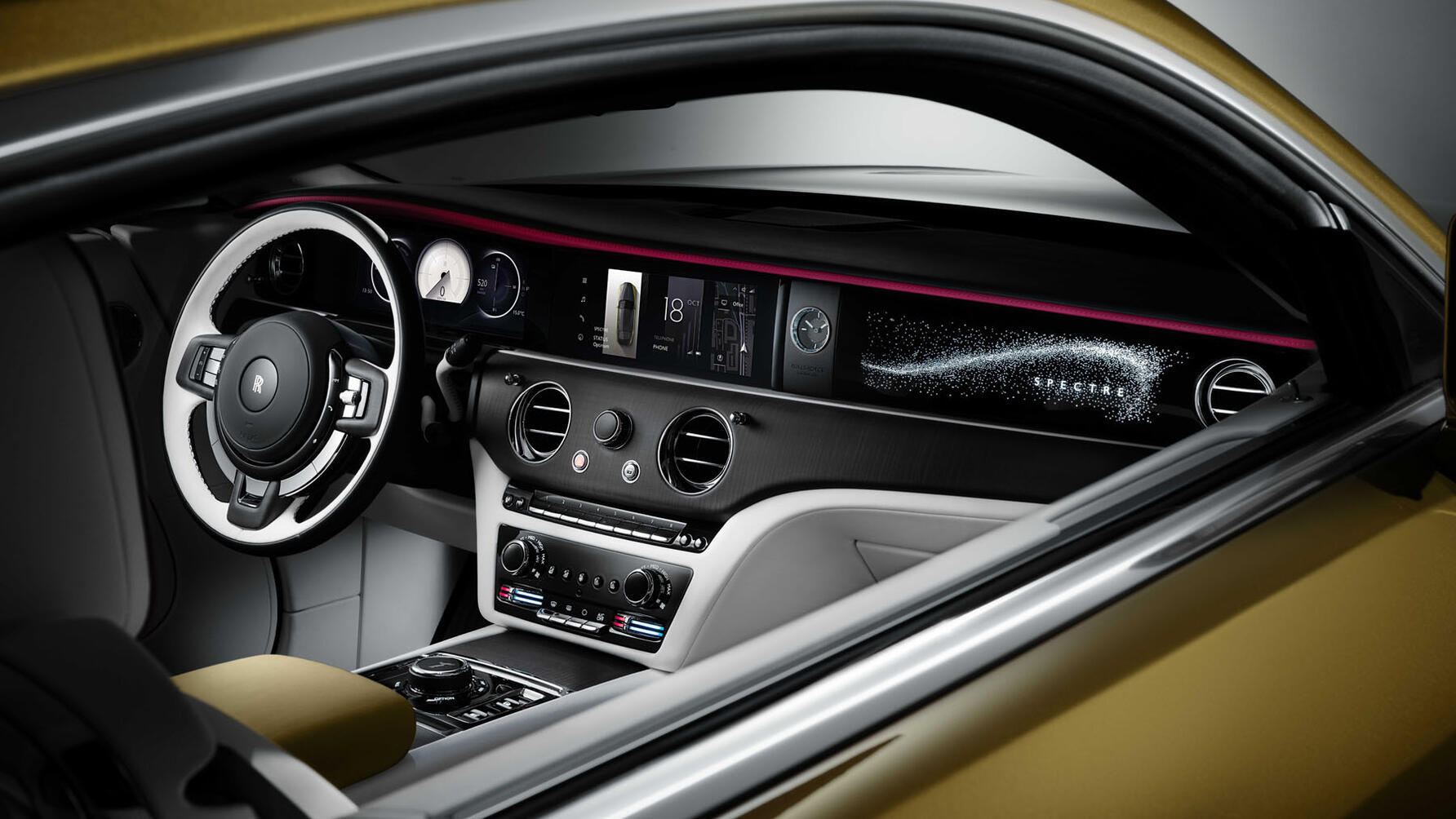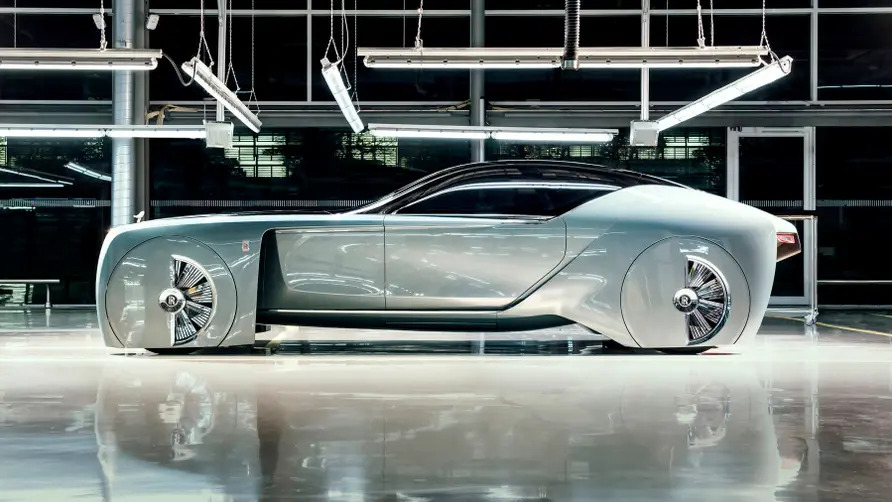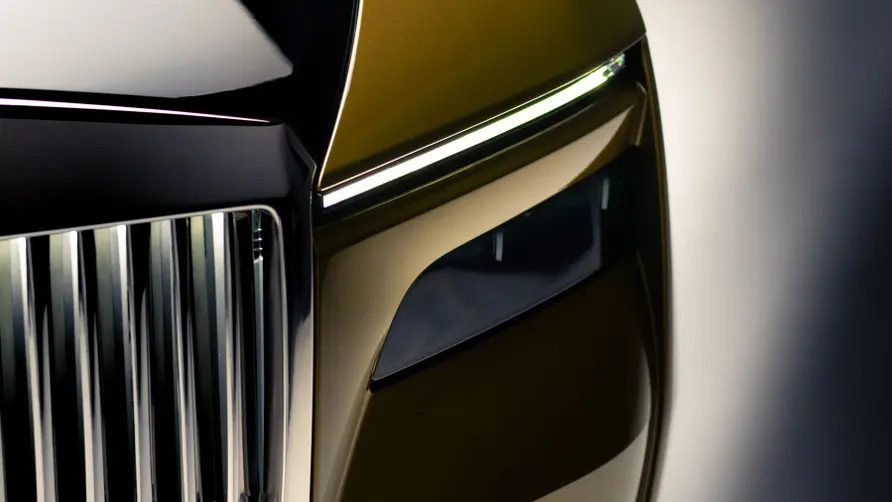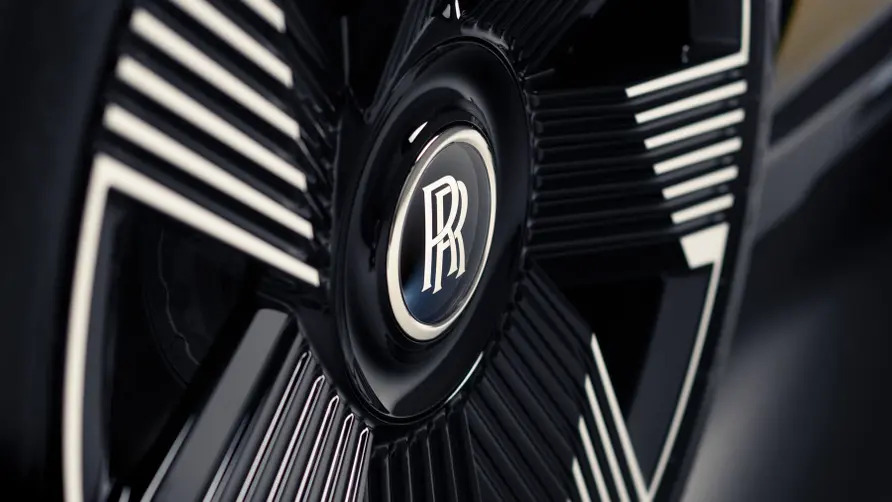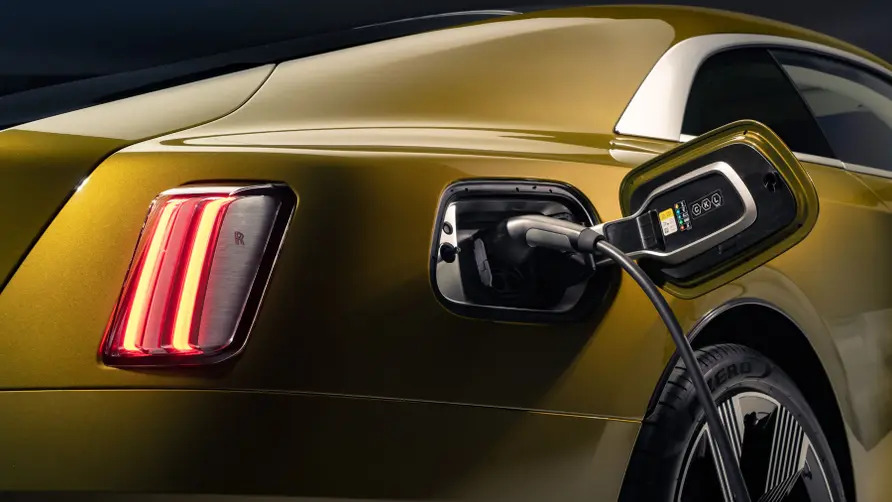A closer look at the all-electric Rolls-Royce Spectre
A closer look at the all-electric Rolls-Royce Spectre
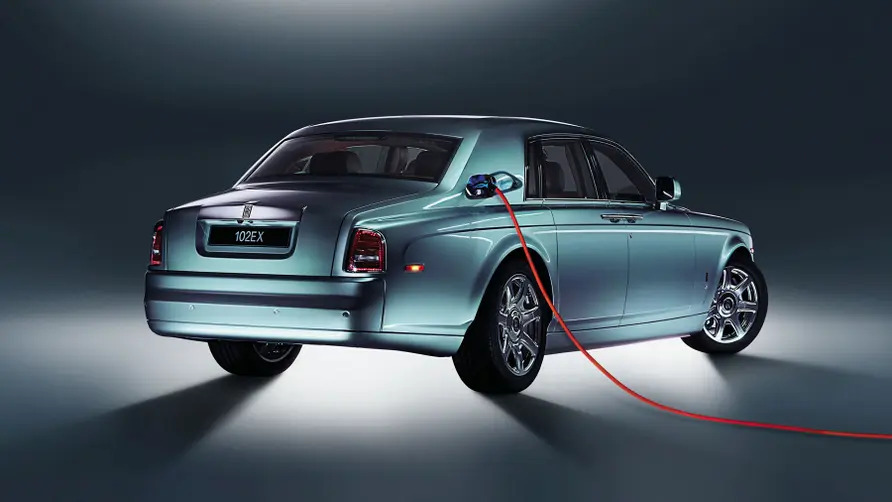
There can hardly be a more suitable drive for a Rolls-Royce than electric motors. CS Rolls himself said it in 1900: “The electric car is perfectly noiseless and clean. There is no smell or vibration.”
Although, presciently, he did add that he had infrastructure concerns. After 120 years of trying, no petrol Rolls-Royce has a powertrain as smooth or silent or responsive as that of a 2011 Nissan Leaf. Or perhaps more relevant, a 2015 Tesla Model X – a powerful, heavy car that goes a long way and charges fast. But this is changing: in a year’s time, this rather fabulous all-electric Spectre will land with its first customers. So TopGear asks Rolls-Royce boss Torsten Müller-Ötvös the obvious question: what kept you? His reply is emphatic. “The customers always said: it has to be a Rolls-Royce first, electric second.”
Rolls-Royce knows those customers intimately. After all, even though their numbers keep growing, there still aren’t that many of them around. Müller-Ötvös has been asking them for a decade what they think about EVs. “In comparison between where the clients were then and now, it has changed massively. On average they own seven cars and many already own an electric car. The feedback on electric propulsion in general is very positive.” So the Spectre doesn’t have to introduce them to the idea of a charge cable instead of a hose of explosive liquid.
Rolls-Royce even made a demo project in 2011, a converted Phantom called 102EX. I still remember driving it. It was a Rolls-Royce squared: silent, smooth, wafty. “This fits perfectly with what the brand stands for. We are not defined by engine noise or loud exhaust.” But the 102EX’s range was as short as its charging time was long. “Ten years ago it wasn’t that the clients weren’t prepared to go for it.
The technology wasn’t at the right level – battery, propulsion, even more important the software. It now is, in a quality that allows us to build a Rolls-Royce. There is no compromise. It allows a bigger car, space, sufficient range, and the right charging. And modern software making it easy to use and interactive. Also, I was not in for the compromise of converting a combustion car.”
Much to our delight, the first electric Rolls-Royce is a coupe. “The Spectre is as important for us as the Silver Ghost.” Since the 40/50HP Ghost came out in 1906, he presumably doesn’t say this lightly. “This is the beginning of a new era for Rolls-Royce and it needs a celebration. A fastback coupe is an emotional car.” Its job is effectively to replace the spectacular Phantom Coupe, absent from the range since 2016.
The Spectre is absolutely a full-size Rolls-Royce. I mean, really big. Those wheels are 23 inches in diameter, a size that can make a Range Rover look like a Golf. It will do 320 miles (WLTP) on a charge. Of course drag matters, and BMW’s expertise via endless CFD and tunnel hours have got it down to a Cd of 0.25. Great work chaps, but look at the size of it. It’s still going to take a lot of pushing through the air. Then there’s the 2,975kg unladen mass to think of. Even so, the Spectre claims 0–62mph in 4.5 seconds. That’s what motors front and back totalling 585bhp and 664lb ft can do for you.
But most of all, it’s a fabulously decadent thing.
As well as acting like a Rolls-Royce, the Spectre has to look like one. It’s certainly got the face, that Greek temple grille and Spirit of Ecstasy mascot. Except not quite the usual ones. The grille is the widest ever on a Rolls-Royce. But it’s largely impervious to air, because there’s no V12 to cool, and the priority is reducing turbulent drag. Its vanes are downlit at night for extra rolling theatre.
Meanwhile, sitting at its apex is a new interpretation of the image of Eleanor Thornton, leaning more forward into the breeze. Either side are split headlights, last seen on the Phantom Coupe. Their upper blades are permanently lit, and below them the main headlights loom out of an enigmatic smoky darkness.
Rolls-Royce even made a demo project in 2011, a converted Phantom called 102EX. I still remember driving it. It was a Rolls-Royce squared: silent, smooth, wafty. “This fits perfectly with what the brand stands for. We are not defined by engine noise or loud exhaust.” But the 102EX’s range was as short as its charging time was long. “Ten years ago it wasn’t that the clients weren’t prepared to go for it. The technology wasn’t at the right level – battery, propulsion, even more important the software. It now is, in a quality that allows us to build a Rolls-Royce. There is no compromise. It allows a bigger car, space, sufficient range, and the right charging. And modern software making it easy to use and interactive. Also, I was not in for the compromise of converting a combustion car.”
Much to our delight, the first electric Rolls-Royce is a coupe. “The Spectre is as important for us as the Silver Ghost.” Since the 40/50HP Ghost came out in 1906, he presumably doesn’t say this lightly. “This is the beginning of a new era for Rolls-Royce and it needs a celebration. A fastback coupe is an emotional car.” Its job is effectively to replace the spectacular Phantom Coupe, absent from the range since 2016.
The Spectre is absolutely a full-size Rolls-Royce. I mean, really big. Those wheels are 23 inches in diameter, a size that can make a Range Rover look like a Golf. It will do 320 miles (WLTP) on a charge. Of course drag matters, and BMW’s expertise via endless CFD and tunnel hours have got it down to a Cd of 0.25. Great work chaps, but look at the size of it. It’s still going to take a lot of pushing through the air. Then there’s the 2,975kg unladen mass to think of. Even so, the Spectre claims 0–62mph in 4.5 seconds. That’s what motors front and back totalling 585bhp and 664lb ft can do for you.
But most of all, it’s a fabulously decadent thing.
As well as acting like a Rolls-Royce, the Spectre has to look like one. It’s certainly got the face, that Greek temple grille and Spirit of Ecstasy mascot. Except not quite the usual ones. The grille is the widest ever on a Rolls-Royce. But it’s largely impervious to air, because there’s no V12 to cool, and the priority is reducing turbulent drag. Its vanes are downlit at night for extra rolling theatre.
Meanwhile, sitting at its apex is a new interpretation of the image of Eleanor Thornton, leaning more forward into the breeze. Either side are split headlights, last seen on the Phantom Coupe. Their upper blades are permanently lit, and below them the main headlights loom out of an enigmatic smoky darkness.
The body’s surfaces are utterly confident. Look around at all the cars that have such relatively flat surfaces and few feature lines. You realise it’s really difficult to do – they mostly look weak and fragile.
But the Spectre’s planes are just so, and the effect is of a car of monolithic strength. The very few lines that do exist are knife sharp, but because of the surface strength it looks like a solid block of carved metal, rather than mere bent sheet. The chrome decor has the same effect, like hewn and polished mass. Those door handles could have come off a bank vault.
Go ahead, pull the handle. As per Rolls practice, the doors are rear hinged, so you just walk in and out. As with the outside, the interior is really Rollsy. But better. No one else does it like this. Every Rolls-Royce since the Goodwood era began in 2003 has worn this confident simplicity, a kind of furniture that owes little to conventional automotive vernacular. Owners will recognise the tactile physical climate controls and iDrive controller. For the first time the instruments are rendered on a screen, albeit still mercifully simulating analogue dials. But they’re configurable in colour to match the fabrics and leathers the buyer has commissioned.
Pretty wild decor in this photo car, eh? The seats have what Rolls is calling a lapel, a dart of upholstery that gives another option for contrast detailing. The doors can be had with either the ‘Starlight’ feature, the – count ’em – 4,796 little bright dots. Or you can go for vast panels of wood. A companion starlit panel covers the passenger side dashboard too.
It’s a full four-seater. “Not a 2+2,” Müller-Ötvös stresses. Space is a luxury, and you might want to bring friends. But this is a coupe and likely it won’t be chauffeur driven. So how will owners use it?
With those average seven cars in the garage this isn’t a commuter car for them. They drive it for the occasional trip, entertainment, a night out, or just ‘going for a spin’. I once drove a Phantom Coupe down to the far end of France in a day. I can think of no better car for the job, but still, it meant an in no way luxurious early start and too many petrol station snacks. An actual Rolls-Royce owner wouldn’t do that. They’d stop at the Hôtel Château de Posh on the way, and of course they’d find an electric charger there. They have a charger at home, and one at work. And so on. Which means the Spectre’s range, some 320 miles of WLTP, is surely going to be more than enough. “Owners don’t drive in one go from London to Edinburgh. Our cars were never about range.” A V12 Rolls-Royce won’It go as far as 320 miles, “and nobody ever asked us for a bigger petrol tank”.
The battery uses BMW’s latest cell type, but the pack is uniquely shaped to fit the Spectre’s floor. The motors too come from BMW, the EESM type that use no rare earth metals and are efficient at high speeds. The Spectre’s structure is a version of the unique-to-Goodwood aluminium architecture.
Pure-electric propulsion was part of the brief when they conceived that, before they first launched it in the Phantom. The Spectre uses air springs, resonators to quell wheel vibrations, adaptive dampers, variable roll stiffness and four-wheel steering. But it’s not the hardware they’re most proud of, it’s the algorithms that control it all, and until we try it out we can’t know how well that has all been calibrated.
The price of all this is “between the Cullinan and Phantom” which means a third of a million pounds – going from there on a skyward trajectory of commissioned options.
So I ask Müller-Ötvös about the profit. He says he can now make an electric car for the same cost as a V12 car. Right there is another significant reason they didn’t do it earlier, as he points out it’s bad business to sell someone an EV that makes less money than the V12 it’s substituting for. So I suspect the timing of the Spectre’s arrival isn’t just about the technology becoming available. I have more faith in the engineers at BMW and Rolls-Royce: they could surely have done it before. They just didn’t need to. As the boss points out, Rolls-Royce has been selling more and more petrol cars every year. “There was no need to rush.”
Now the time has come. Buyers want an electric car, and it’ll make money. Most of all, it’s doable to Rolls-Royce’s standards. Indeed, by the look of it, possibly even better than that.
